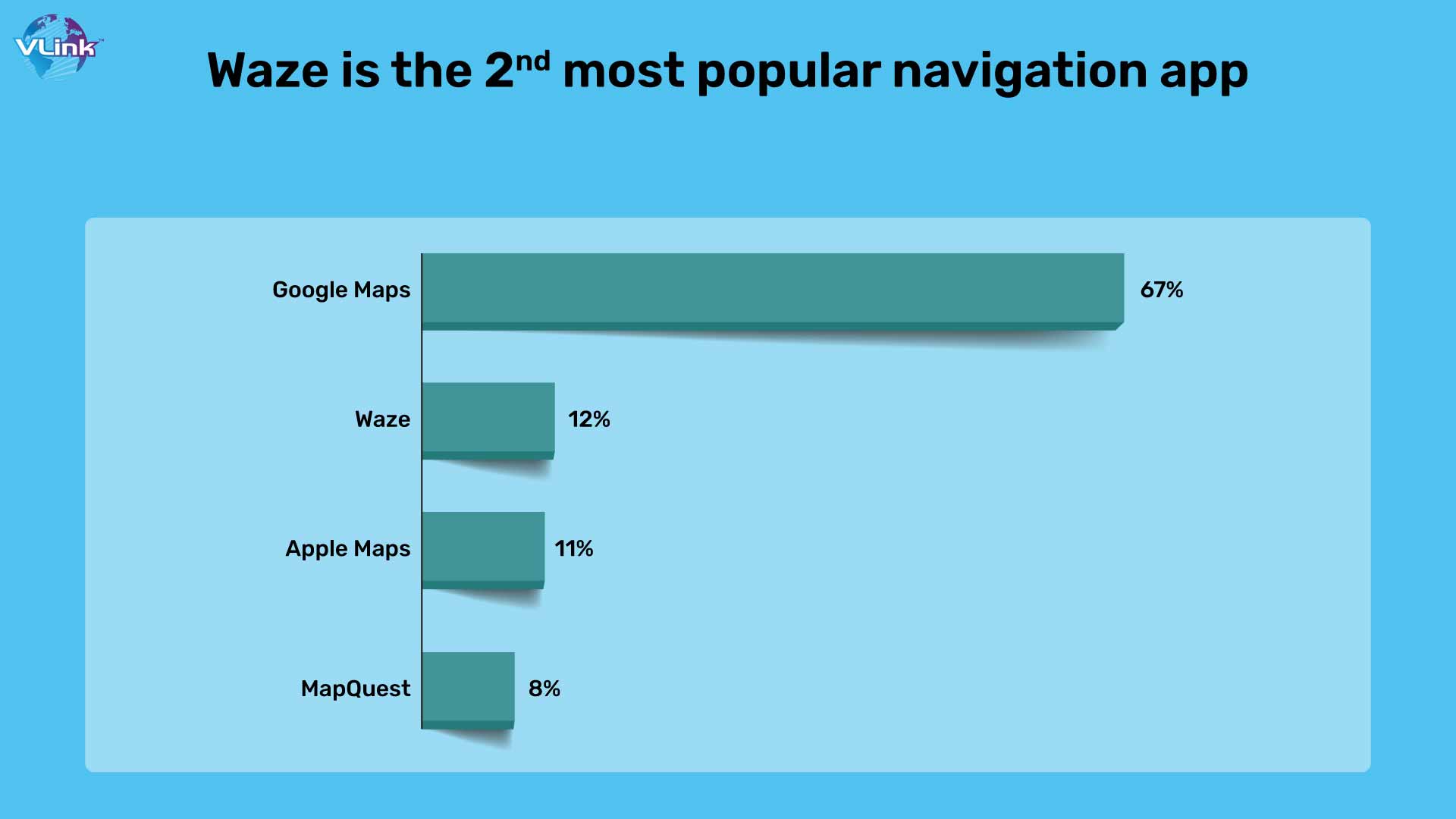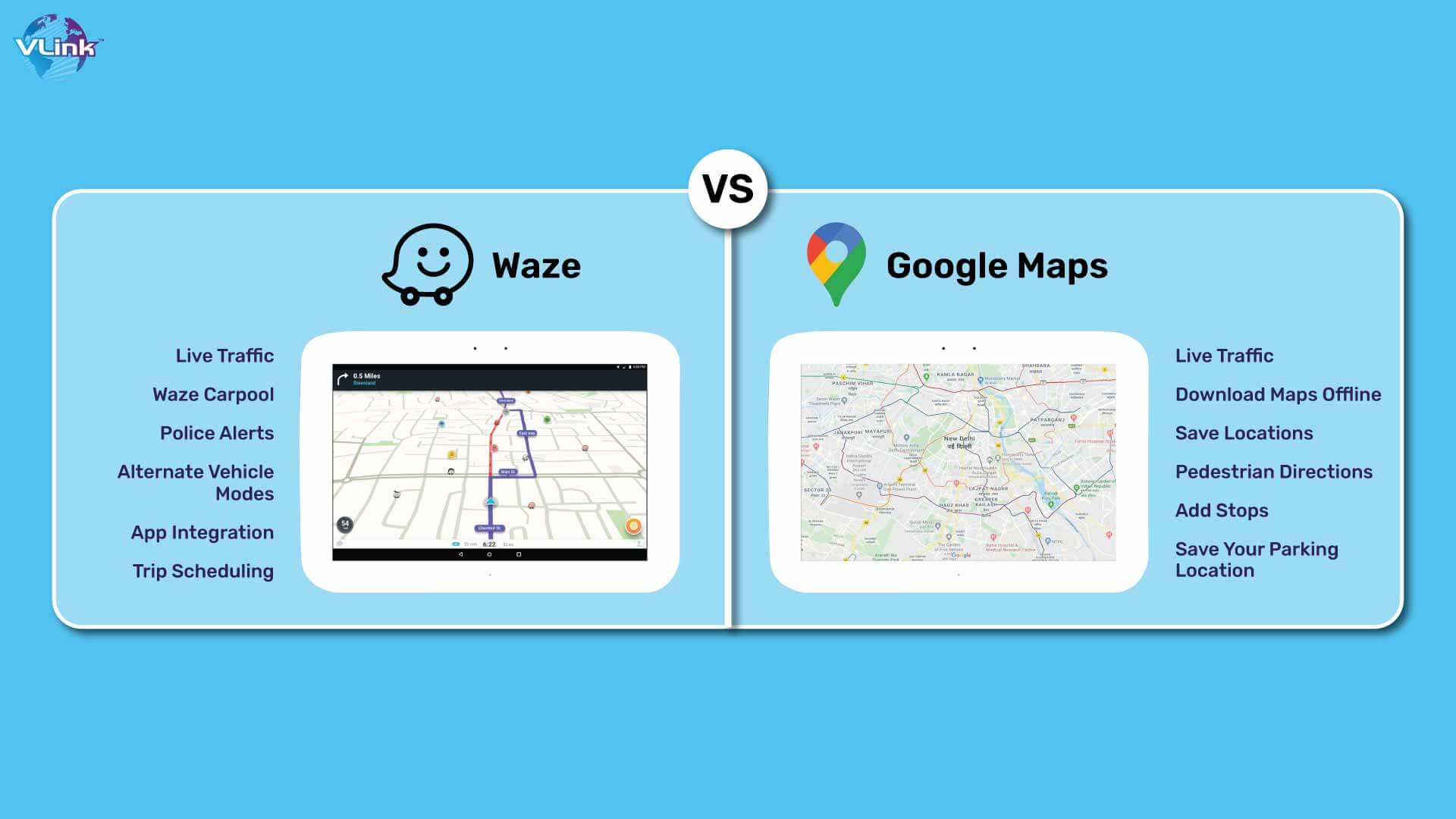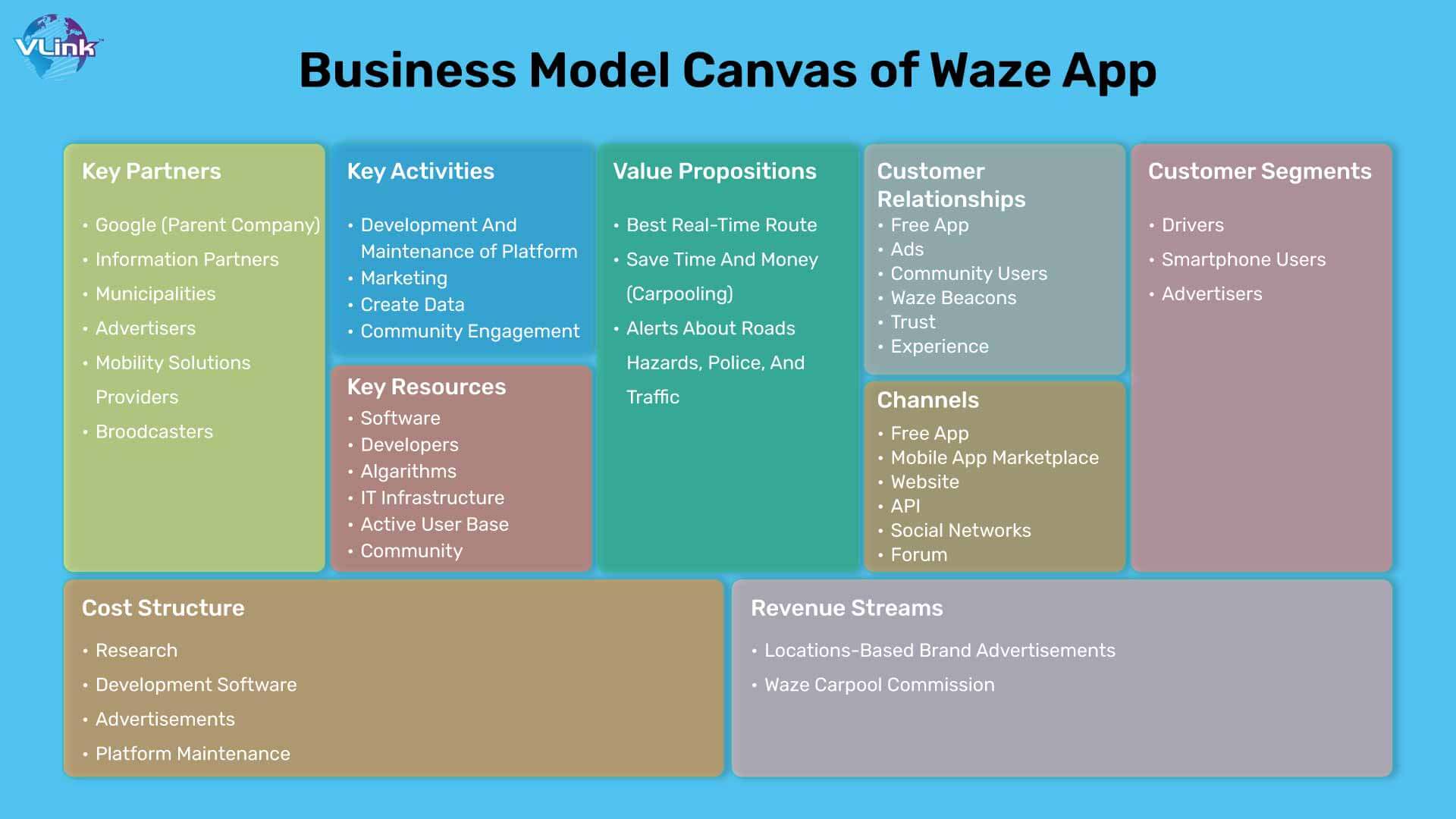Ever wondered how Waze became such a hit? You probably know Waze as that app on your phone that helps you find the quickest route while dodging traffic. It's a free download on Apple's App Store and Google Play, making it easy for anyone to use.
So, Waze is like Google Maps, but with some extra bells and whistles. It doesn't just give you directions; it also taps into real-time info shared by other users. Picture this: You're driving, and Waze tells you about accidents or roadblocks ahead, helping you steer clear of trouble.
Here's the cool part – Waze lets users report incidents directly on the map, a feature Google Maps doesn't have (at least not yet). So, it's like a community of drivers helping each other out on the road. Neat, huh?
 In this blog we’ll discuss Waze app’s journey and success growth in the market despite having a tough competition.
In this blog we’ll discuss Waze app’s journey and success growth in the market despite having a tough competition.
How did the idea of Waze come up?
Waze isn't just your typical navigation app – it's like a buddy for your travels, powered by a community of users. You can run it on your smartphone or tablet with GPS to get step-by-step directions and handy guidance. It's up for grabs on iOS and Android mobile app, so you can easily snag it for your device.
Back in 2006, a year after Google Maps hit the scene, Waze started its journey as FreeMap Israel. It took a couple of years and a name change in 2008 for Waze to become what we know today.
In the beginning, Waze had a bit of a slow start. Limited features, a small user base, and the founders scrambling for funding. But, as more drivers hopped on board, things started picking up. The founders spiced things up by adding gamification – think points systems and social features – to keep users engaged.
 Fast forward, and Waze has become a global phenomenon, reaching over 185 countries. By the end of 2018, it was cruising with over 115 million active users each month. Quite the journey, huh?
Fast forward, and Waze has become a global phenomenon, reaching over 185 countries. By the end of 2018, it was cruising with over 115 million active users each month. Quite the journey, huh?
How did Waze become so popular?
Waze gained fame for its smart GPS navigation app that helps drivers steer clear of traffic jams. This app, available on any GPS-enabled smartphone, feeds users real-time traffic updates shared by fellow drivers. It not only offers turn-by-turn directions but also relies on community-sourced information, making it a go-to for those tired of road congestion.
One key to Waze's popularity is its user-friendly interface. Easy to navigate, it provides directions for drivers of all ages and experience levels. The app's primary goal is to help users efficiently reach their destinations without hassle.
What makes Waze even more appealing is that it's a free app, with no cost to end-users. Instead of charging users, Waze initially made money through advertising and data services for businesses—a business-to-business (B2B) model.
Waze's growth resulted from a blend of innovative technology, community involvement, and strategic marketing. Its success is attributed to:
- Community-Driven Approach: Waze tapped into its user community to provide real-time traffic updates and navigation information, making it more accurate and user-friendly than traditional navigation apps.
- Innovative Technology: Waze's real-time traffic data and personalized routing set it apart from competitors, offering users highly accurate and efficient navigation.
- Strategic Partnerships: Collaborating with government agencies, media companies, and transportation providers, Waze increased its visibility. For example, during the 2014 World Cup, it worked with Rio de Janeiro to provide real-time traffic updates, gaining attention from soccer fans globally.
- Social Media Marketing: Waze used platforms like Facebook and Twitter to promote its service, running targeted ads to reach specific audiences.
- Word-of-Mouth Marketing: The community-driven aspect generated positive word-of-mouth, with users sharing features like sending locations to friends and family. Gamification features encouraged user invites, rapidly expanding Waze's user base.
In essence, Waze's success is a result of its innovative tech, engaged community, and savvy marketing strategies. As users found value in the app, its popularity naturally spread through word of mouth and strategic partnerships, ultimately contributing to its widespread adoption.
How Waze app makes money?
Waze makes money through in-app location-based advertising, following a pay-per-click (PPC) pricing model. Advertisers can choose from various ad formats:
- Branded Pins: These are like digital store signs on Waze maps that pop up as you drive.
- Search Ads: Displayed at the top of search results within the app when users look for something.
- Zero-Speed Takeover: Digital billboard ads that appear if a driver stops for at least 3 seconds.
Waze shows these ads on its interface, updating them in real-time based on the user's location, aiming to offer relevant ads from nearby shops. According to Waze, brands can sign up for as little as $2 per day for those with fewer than 10 locations, escalating to a minimum of $100 per day for brands with over 10 locations.
In 2018, Waze introduced a carpooling service that differs from traditional ride-sharing. Instead of connecting riders with professional drivers, Waze Carpool encourages everyday drivers to share rides.
As of now, Waze Carpool operates in the US, Mexico, Brazil, and Israel. Riders can access the feature within the regular Waze app, while drivers need to download the standalone "Waze Carpool" app on iOS and Android.
Waze allows each driver two carpools a day, and riders are charged a maximum of 54 cents-per-mile. The cost is determined by factors such as the base price, the number of riders, and potential promotions/coupons. Currently, Waze has waived service fees.
Waze collects location-based information to enhance its services and provide real-time ads. The option to sell this data to other companies contributes to Waze's revenue. This capability played a significant role in Google's decision to acquire Waze, as it enables the delivery of targeted ads based on location and user data.

Google acquiring Waze app
Google's whopping $1.3 billion bid to acquire Waze marked a significant strategic move. Despite Google's existing success in mapping services, this acquisition allowed them to leverage Waze's crowdsourced data to enhance their own offerings.
Gradually, Google has been integrating Waze's valuable data into Google Maps, improving routing based on the insights gathered from Waze users. Additionally, Google now permits others to utilize Waze's map data through the Google Waze API, though this access is limited to Waze's map data and excludes user-contributed and traffic information.
Now, you might wonder why Google hasn't fully merged Waze with Google Maps. The reason lies in the subtle distinctions that make Waze a standalone service while still contributing to the enhancement of Google Maps. Waze serves as an additional source for collecting user and location data – the essential component that enables companies like Google to provide their services for free.
Moreover, Google's acquisition of Waze was a strategic move to prevent its competitors, particularly Facebook and Apple, from gaining control of this valuable navigation tool.
Navigating ways for future with Waze
In charting its successful journey, Waze has evolved from its humble beginnings to become the world's most popular and dependable navigation app. Waze gained widespread acclaim by offering users free access to directions, real-time traffic updates, and various tools to plan their routes efficiently.
This approach rapidly garnered millions of users, fostering brand loyalty and goodwill. Notably, unlike many free mapping services, Waze doesn't generate revenue directly from end consumers through a Business-to-Consumer (B2C) model.
Instead, Waze strategically focuses on Business-to-Business (B2B) marketing, generating income by selling ads, data, and other services to businesses. The app positions itself as a solution for companies seeking innovative ways to connect with customers and target potential leads in a personalized manner.
Through data-driven decision-making and a clear vision, Waze has successfully navigated its way to the top by consistently adapting and refining its strategy to stay ahead of competitors.
By delineating its business objectives and carrying out its mission, Waze has emerged as a leader in the industry, providing a model for other companies to follow in adopting a B2B business model while leveraging a substantial user base of private consumers.
Build your own navigation app like Waze with VLink
As navigation apps like Waze take the lead in the twenty-first century, companies are eager to join the industry, given the widespread popularity of mobile app development. Developing GPS tracking apps, however, can be challenging.
With a reliable tech partner and an on-demand app development company at your disposal, you can turn your idea into an app that can dominate the market. VLink is well-known for creating on-demand apps that tackle significant issues.
We're the on-demand app development company behind some of the most user-friendly instant applications. Our team of on-demand app developers excels in adding features that can propel your standard app to the top of the charts.
The Waze app serves as an excellent example of how GPS can be integrated into an app. Drawing inspiration from such a reference can help you offer users something entirely original and beneficial.
Frequently Asked Questions
The future of Waze looks promising as it continues to innovate in the navigation space. With its community-driven approach, the app is likely to evolve with new features and technologies, maintaining its position as a leader in real-time navigation and traffic information.
Waze generates revenue through in-app location-based advertising, offering ad formats like Branded Pins, Search Ads, and Zero-Speed Takeover. It also introduced a carpooling service in 2018 and has explored data deals, collecting and selling location-based information.
Waze collects location-based information to enhance its services and provide real-time ads. While user privacy is a priority, the option to sell aggregated traffic and map data to other companies plays a role in refining Waze's features and maintaining its accuracy.
Waze goes beyond conventional navigation by incorporating user-generated data, such as real-time reports on accidents and traffic. This community-driven approach provides a dynamic and personalized navigation experience, distinguishing it from other apps.







